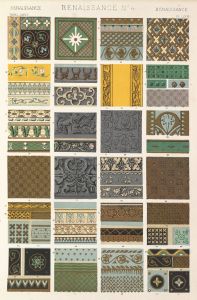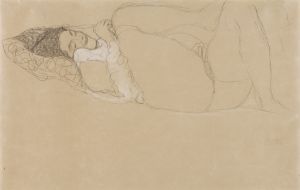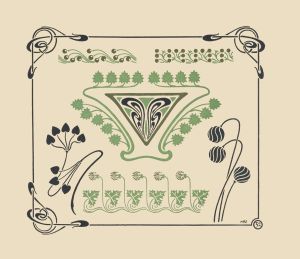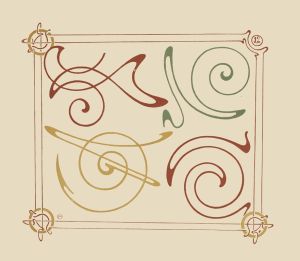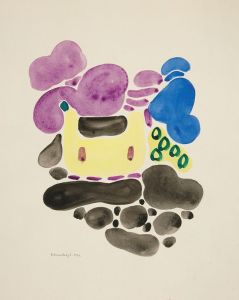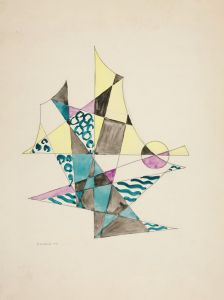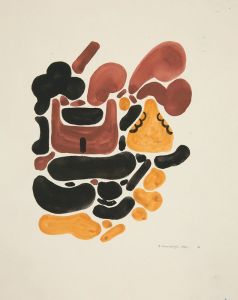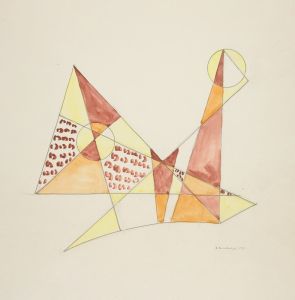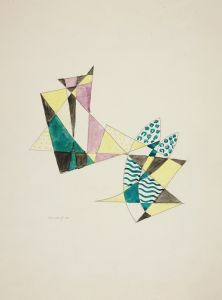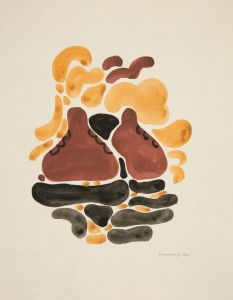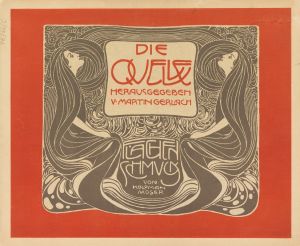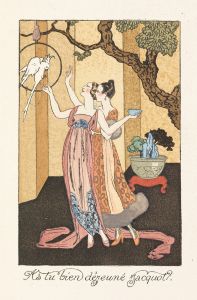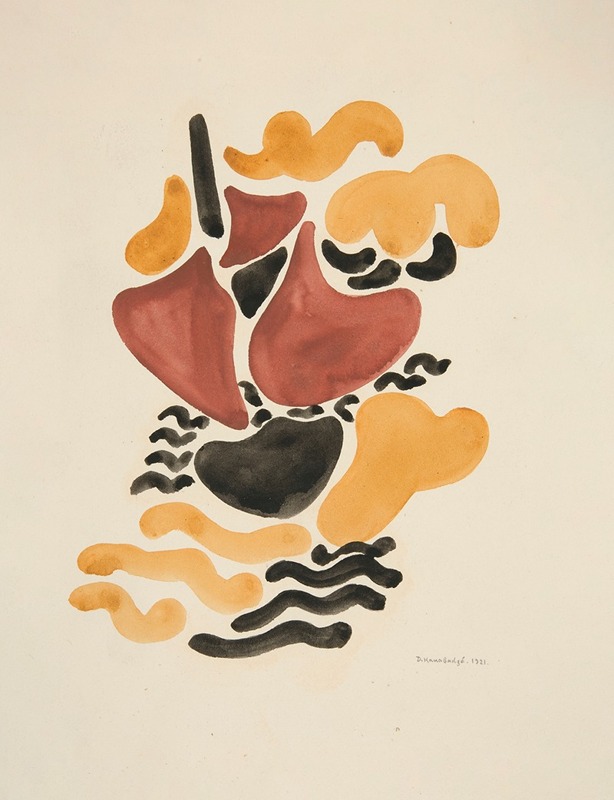
Abstraction Based on Flower Forms, IV
A hand-painted replica of David Kakabadzé’s masterpiece Abstraction Based on Flower Forms, IV, meticulously crafted by professional artists to capture the true essence of the original. Each piece is created with museum-quality canvas and rare mineral pigments, carefully painted by experienced artists with delicate brushstrokes and rich, layered colors to perfectly recreate the texture of the original artwork. Unlike machine-printed reproductions, this hand-painted version brings the painting to life, infused with the artist’s emotions and skill in every stroke. Whether for personal collection or home decoration, it instantly elevates the artistic atmosphere of any space.
David Kakabadzé was a Georgian avant-garde painter, graphic artist, and stage designer, known for his innovative approach to art and his contributions to the development of modern art in Georgia. One of his notable works is "Abstraction Based on Flower Forms, IV," which exemplifies his exploration of abstraction and his interest in the natural world.
Kakabadzé was born on August 20, 1889, in the village of Kukhi in the Kutaisi Governorate of the Russian Empire, now part of modern-day Georgia. He studied at the St. Petersburg Academy of Arts, where he was exposed to various art movements and began to develop his unique style. His work often incorporated elements of Cubism, Futurism, and other avant-garde movements, reflecting his interest in both Western and Eastern artistic traditions.
"Abstraction Based on Flower Forms, IV" is part of a series of works where Kakabadzé explored the abstraction of natural forms, particularly flowers. This series is significant as it demonstrates his ability to blend natural motifs with abstract forms, creating a harmonious balance between representation and abstraction. The painting is characterized by its use of geometric shapes and vibrant colors, which together create a dynamic composition that captures the essence of the natural forms he was inspired by.
Kakabadzé's approach to abstraction was deeply rooted in his belief that art should reflect the underlying structures of nature. He was interested in the idea of a universal language of forms and colors that could transcend cultural and linguistic barriers. In "Abstraction Based on Flower Forms, IV," this philosophy is evident in the way he distills the essence of flowers into their most basic geometric components, while still maintaining a sense of organic vitality.
Throughout his career, Kakabadzé was also involved in various other artistic endeavors, including stage design and filmmaking. His interdisciplinary approach to art allowed him to experiment with different media and techniques, further enriching his artistic practice. Despite facing political and social challenges during his lifetime, including the upheaval of the Russian Revolution and the subsequent establishment of Soviet rule in Georgia, Kakabadzé remained committed to his artistic vision.
"Abstraction Based on Flower Forms, IV" is a testament to Kakabadzé's innovative spirit and his contribution to the development of modern art in Georgia. His work continues to be celebrated for its unique synthesis of traditional and modern elements, and his influence can be seen in the work of subsequent generations of Georgian artists.
Today, David Kakabadzé is regarded as one of the pioneers of modern art in Georgia, and his works are held in high esteem both in his home country and internationally. His exploration of abstraction and his ability to capture the essence of natural forms in a modern context have left a lasting legacy in the world of art.





